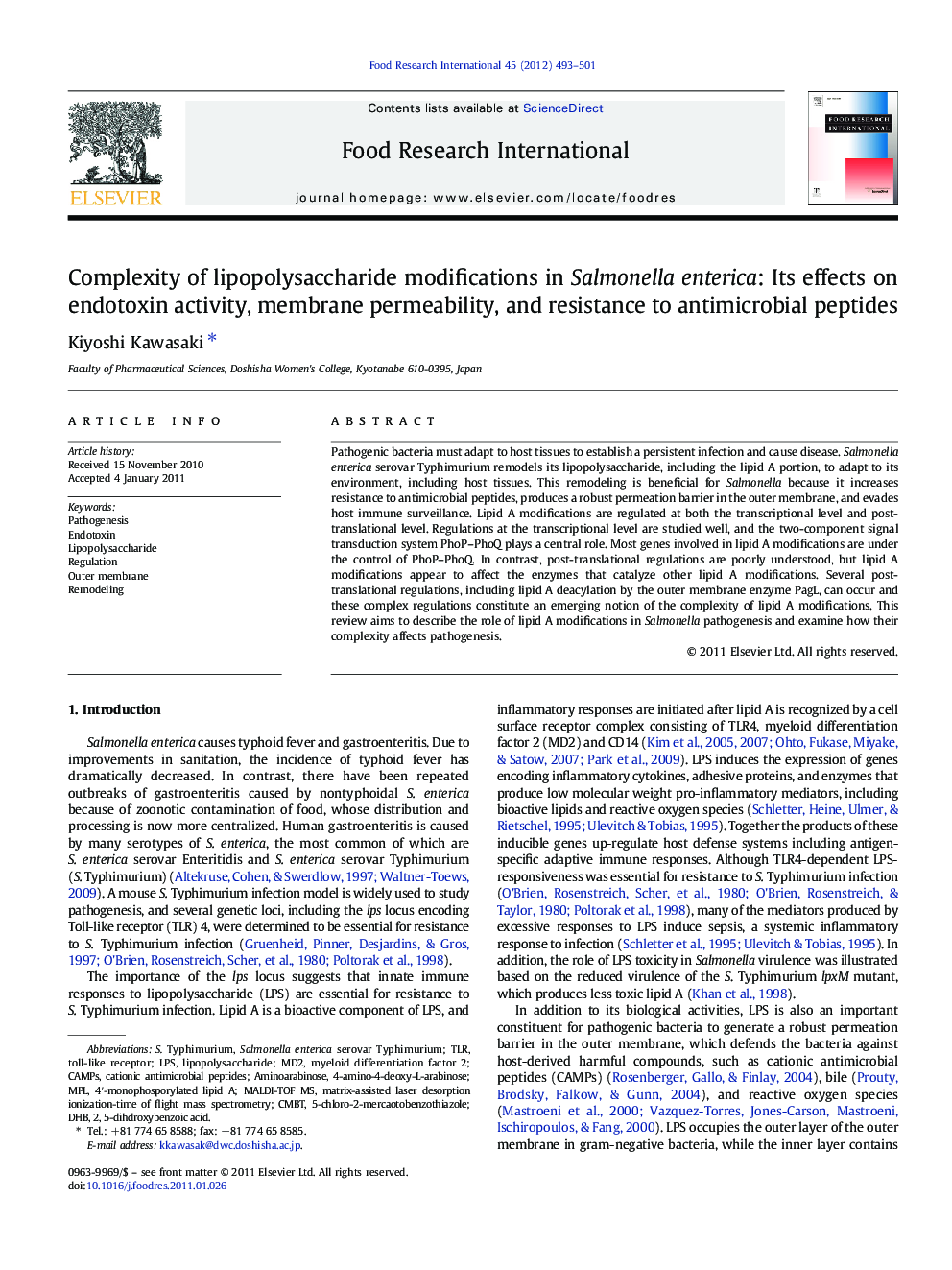| کد مقاله | کد نشریه | سال انتشار | مقاله انگلیسی | نسخه تمام متن |
|---|---|---|---|---|
| 4561700 | 1330688 | 2012 | 9 صفحه PDF | دانلود رایگان |

Pathogenic bacteria must adapt to host tissues to establish a persistent infection and cause disease. Salmonella enterica serovar Typhimurium remodels its lipopolysaccharide, including the lipid A portion, to adapt to its environment, including host tissues. This remodeling is beneficial for Salmonella because it increases resistance to antimicrobial peptides, produces a robust permeation barrier in the outer membrane, and evades host immune surveillance. Lipid A modifications are regulated at both the transcriptional level and post-translational level. Regulations at the transcriptional level are studied well, and the two-component signal transduction system PhoP–PhoQ plays a central role. Most genes involved in lipid A modifications are under the control of PhoP–PhoQ. In contrast, post-translational regulations are poorly understood, but lipid A modifications appear to affect the enzymes that catalyze other lipid A modifications. Several post-translational regulations, including lipid A deacylation by the outer membrane enzyme PagL, can occur and these complex regulations constitute an emerging notion of the complexity of lipid A modifications. This review aims to describe the role of lipid A modifications in Salmonella pathogenesis and examine how their complexity affects pathogenesis.
Journal: Food Research International - Volume 45, Issue 2, March 2012, Pages 493–501